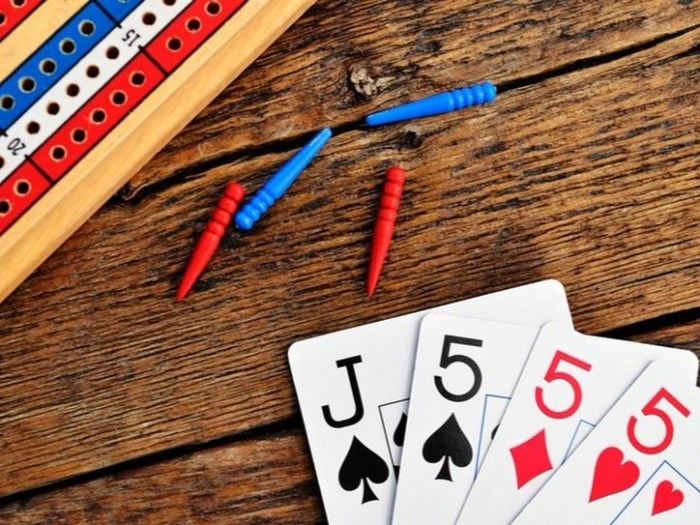
Two-player card games have captivated players for generations, offering a blend of strategy, luck, and social interaction that makes them a favorite pastime. These games not only provide entertainment but also foster competition and camaraderie between opponents.
In this exploration, we’ll delve into some of the most popular two-player card games, their rules, strategies for winning, and how they compare to board games. Additionally, we’ll look at the evolution of these games and the influence of technology on their accessibility and popularity.
Popular Two-Player Card Games
In the world of card games, two-player formats offer engaging and strategic experiences that can be enjoyed in a relatively short time. Whether you’re looking to challenge a friend or family member, these games provide a perfect blend of luck and skill. Below, we’ll explore five of the most popular two-player card games currently trending, including their rules, setup, and strategies for success.
Top Five Two-Player Card Games
Understanding the characteristics and gameplay of these popular card games is essential for both new players and seasoned veterans. Here’s a look at what makes each game unique along with the necessary rules and strategies.
- Rummy
Rummy involves forming sets or runs of cards to score points. The objective is to be the first to discard all your cards while keeping the combinations valid.
Setup: Use a standard 52-card deck. Each player is dealt 10 cards, with the rest forming the draw pile. The top card is turned face-up to create the discard pile.
Rules: Players take turns drawing from either the draw or discard pile and aim to lay down valid sets or runs. A turn ends with a discard.
Winning Strategy: Keep track of the cards your opponent picks up and discard cards that are less likely to help them. Aim to form groups early on to reduce the number of points in your hand.
- Gin Rummy
A variation of Rummy, Gin Rummy focuses on forming sets and runs, but the game also emphasizes knocking to end the round.
Setup: Similar to Rummy, but each player is dealt 10 cards. A discard pile and draw pile are created as before.
Rules: Players can knock when they have 10 points or fewer in deadwood (unmatched cards). The round ends with a final discard.
Winning Strategy: Maintain a balance between offense and defense. Observe your opponent’s discards to anticipate their hand while minimizing your deadwood.
- War
War is a simple yet highly strategic game where players pit their cards against each other to win the entire deck.
Setup: A standard deck is split evenly between players, each receiving 26 cards.
Rules: Each player reveals the top card. The higher card wins; the winner takes both cards. In case of a tie, a ‘war’ occurs, where players play additional cards.
Winning Strategy: While primarily a game of luck, keeping track of the cards played can give you an edge during wars. Be mindful of how many high cards are left in your deck.
- Cribbage
Cribbage combines elements of chance and skill, focusing on scoring combinations of cards to reach a target score.
Setup: Players use a standard deck and a pegboard to keep score. Each player is dealt six cards, and they discard two into the crib.
Rules: Players score points by playing cards in sequence and forming combinations. The crib is scored at the end of each round.
Winning Strategy: Focus on maximizing the points in your hand while minimizing potential points for your opponent’s crib. Strategic discarding is crucial.
- Speed
Speed is a fast-paced game where players aim to get rid of all their cards as quickly as possible.
Setup: A standard deck is shuffled, and each player is dealt five cards. The remainder forms a draw pile.
Rules: Players simultaneously try to place cards in ascending or descending order on two central piles. The first to run out of cards wins.
Winning Strategy: Quick thinking and hand-eye coordination are essential. Pay attention to your opponent’s moves to anticipate their card plays.
Comparing Card Games and Board Games
![20 Great Two Player Card Games You Must Try [UPDATED] 20 Great Two Player Card Games You Must Try [UPDATED]](https://tommyac.info/wp-content/uploads/2025/06/speed-on-the-road.jpeg)
The world of games is rich and diverse, with two-player card games and board games standing out as two popular forms of entertainment. Both types of games provide unique gameplay experiences, varying strategies, and social interactions. In this discussion, we will delve into the differences between two-player card games and board games, highlighting their gameplay experiences, popular board games that complement card games, and the social dynamics that characterize each.
Gameplay Experience of Card Games Versus Board Games
The gameplay experience in two-player card games is often fast-paced and dynamic, focusing heavily on strategy and chance. Players usually have a smaller set of rules to navigate, which allows for quicker decision-making and increased engagement. In contrast, two-player board games often involve a more extensive setup and longer playtime, featuring a board and game pieces that create a more immersive environment.
This can lead to deeper strategic planning and longer-term thinking. In card games like “Rummy” or “War,” players frequently draw cards and make quick decisions, sometimes leading to rapid rounds that can shift in an instant. Conversely, board games like “Chess” or “Checkers” require players to think several moves ahead, fostering a more analytical style of play.
Popular Two-Player Board Games That Complement Card Games
A selection of two-player board games can beautifully complement the experience of card games, often providing an alternative or a different pace of play. Here are some noteworthy examples:
- Chess: A classic strategic game focusing entirely on skill and foresight, perfect for players looking to deepen their tactical thinking.
- Checkers: A simpler, yet strategic game, ideal for quick matches that can serve as a nice contrast to more complex card games.
- Go: An ancient game that offers profound depth and complexity, engaging players in abstract strategy.
- Backgammon: Combining luck and strategy, this game introduces elements of chance similar to card games while offering a different gameplay experience.
These board games can serve as a refreshing option after a few rounds of card games, providing a different atmosphere and type of interaction.
Social Dynamics in Playing Card Games Versus Board Games
The social dynamics involved in two-player card games often lean towards a more relaxed and informal atmosphere. Players can engage in light banter, and the quick nature of the game allows for multiple rounds in a single sitting. Card games can create a lively environment where the stakes can shift rapidly, enhancing the excitement of social interaction.In contrast, board games typically foster a more focused and intense environment, often involving deeper engagement and strategy discussions.
This can lead to a higher level of concentration and sometimes even competition, as players may feel the weight of their decisions more significantly.
“The choice between a card game and a board game can reflect the mood and social dynamics desired in a gaming session.”
Overall, while both card games and board games offer unique and valuable experiences, their differences in gameplay, structure, and social interactions can significantly affect how players engage with each other and the game itself.
The Evolution of Two-Player Games
The development of two-player card games has a rich history that showcases how they have adapted over time to reflect changing cultures, societal norms, and technological advancements. From their origins in ancient civilizations to their current forms, these games have evolved into a diverse range of formats and styles, captivating players across generations.Two-player card games can be traced back to the 9th century in China, where card games began to emerge as forms of entertainment.
Over the centuries, these games migrated through trade routes and were influenced by various cultures, leading to the development of distinct styles and rules. The 15th century saw the introduction of the first known deck of playing cards in Europe, which included suits and ranks that we still recognize today. As societies evolved, so too did the games, incorporating new rules and mechanics to enhance engagement and enjoyment.
Differences Between Traditional and Modern Two-Player Card Games
Understanding how traditional and modern two-player card games differ sheds light on their evolution and appeal. The following table highlights these differences across various dimensions, including gameplay mechanics, themes, and accessibility.
| Aspect | Traditional Card Games | Modern Card Games |
|---|---|---|
| Gameplay Mechanics | Fixed rules, slower-paced | Dynamic rules, fast-paced with strategic elements |
| Themes | Classic themes (e.g., trick-taking, matching) | Diverse themes (e.g., fantasy, strategy, storytelling) |
| Player Interaction | Mostly competitive | Cooperative and competitive options |
| Accessibility | Requires physical cards and face-to-face interaction | Available online and through mobile apps, allowing for remote play |
| Visuals | Standard designs and limited artwork | Rich artwork and unique designs that enhance experience |
The influence of technology on the popularity and accessibility of two-player card games has been profound. Online platforms and mobile applications have made it possible to play these games anytime, anywhere, breaking down geographical barriers. Games like “Hearthstone” and “Magic: The Gathering Arena” have introduced digital gameplay mechanics that enhance the traditional experience, offering players an opportunity to engage with a global community.
Additionally, tutorial features and interactive tutorials have lowered the entry barrier for new players, making it easier for anyone to learn and enjoy card games. Moreover, the rise of streaming platforms has transformed how players interact with these games, allowing enthusiasts to share their experiences, strategies, and gameplay highlights with larger audiences. The combination of technology and community engagement has revitalized the card gaming landscape, ensuring its continued relevance and growth in the modern era.
Closing Notes

In conclusion, two-player card games are a rich tapestry of history, strategy, and fun that continue to engage players in new ways. Whether playing face-to-face or online, these games offer an enjoyable escape and a chance to sharpen your skills while having a great time.
FAQs
What are some examples of popular two-player card games?
Some popular examples include Gin Rummy, Crazy Eights, War, and Cribbage.
Can two-player card games be played online?
Yes, many two-player card games have online versions that enable players to compete against others or against AI.
How do you improve your skills in two-player card games?
Practicing regularly, studying strategies, and analyzing your gameplay can greatly enhance your skills.
Are two-player card games suitable for all ages?
Yes, many two-player card games are designed to be accessible and enjoyable for players of all ages.
How long does a typical two-player card game last?
Game duration can vary widely, but most two-player card games last anywhere from 15 to 60 minutes.






